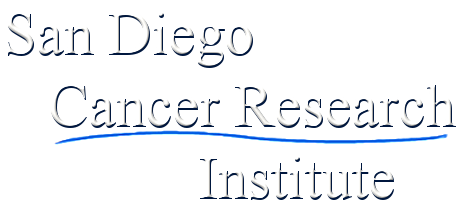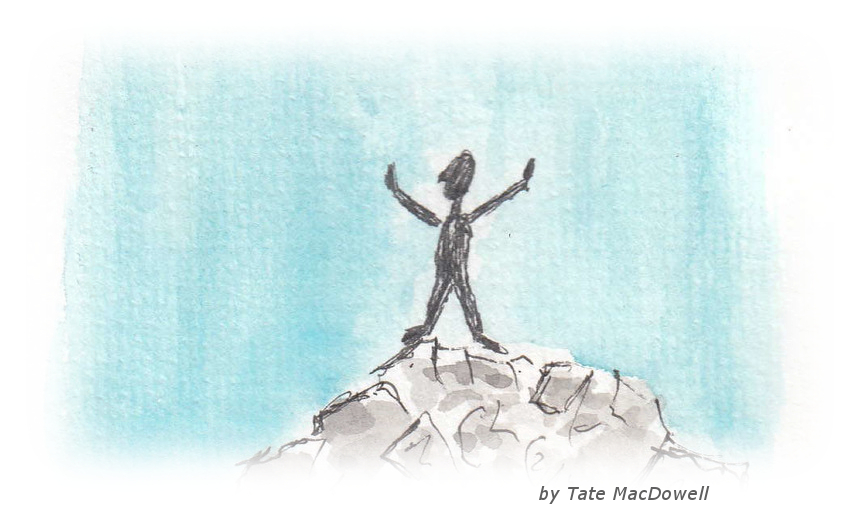Featured Articles Archive 2019
FDA warns 15 companies for illegally selling various products containing cannabidiol as agency details safety concerns on FDA.gov, published on November 25th, 2019
The Mountain, Revisited A Tribute to Tate MacDowell, posted on November 5th, 2019
Good Vibes For Better Health: The emerging science of positive emotional state of mind and health by David Muehsam, Ph.D, posted October 2nd, 2019
Digging Out of Debt for Cancer Survivors by Jeannette Moninger, published on August 09, 2019
Healing Grief Thru HeArt by Alessandra Colfi, PhD, posted on August 5th, 2019
Understanding The Connection Between Addictions and Cancer by Patrick Bailey, posted on July 5th, 2019
How Physical Therapy Can Help Ease Cancer Pain by Dr. Brent Wells, posted on June 4th, 2019
A New Frontier for Evidence-Informed Integrative Oncology Care from The Journal of Oncology Practice, shared on May 2nd, 2019
Implementing Integrative Oncology: Hopes and Challenges from The Journal of Oncology Practice, shared on April 2nd, 2019
Putting Integrative Oncology Into Practice from The Journal of Oncology Practice, shared on March 1st, 2019
Food Is Medicine from theconversation.com, published on January 18th, 2019
SDCRI Review for the year 2018 by Daniel Vicario, M.D., posted on January 10th, 2019!
Featured Articles Archive 2014-2016
Featured Articles Archive 2017-2018
Return to the main Featured Articles Page
FDA warns 15 companies for illegally selling various products containing cannabidiol as agency details safety concerns
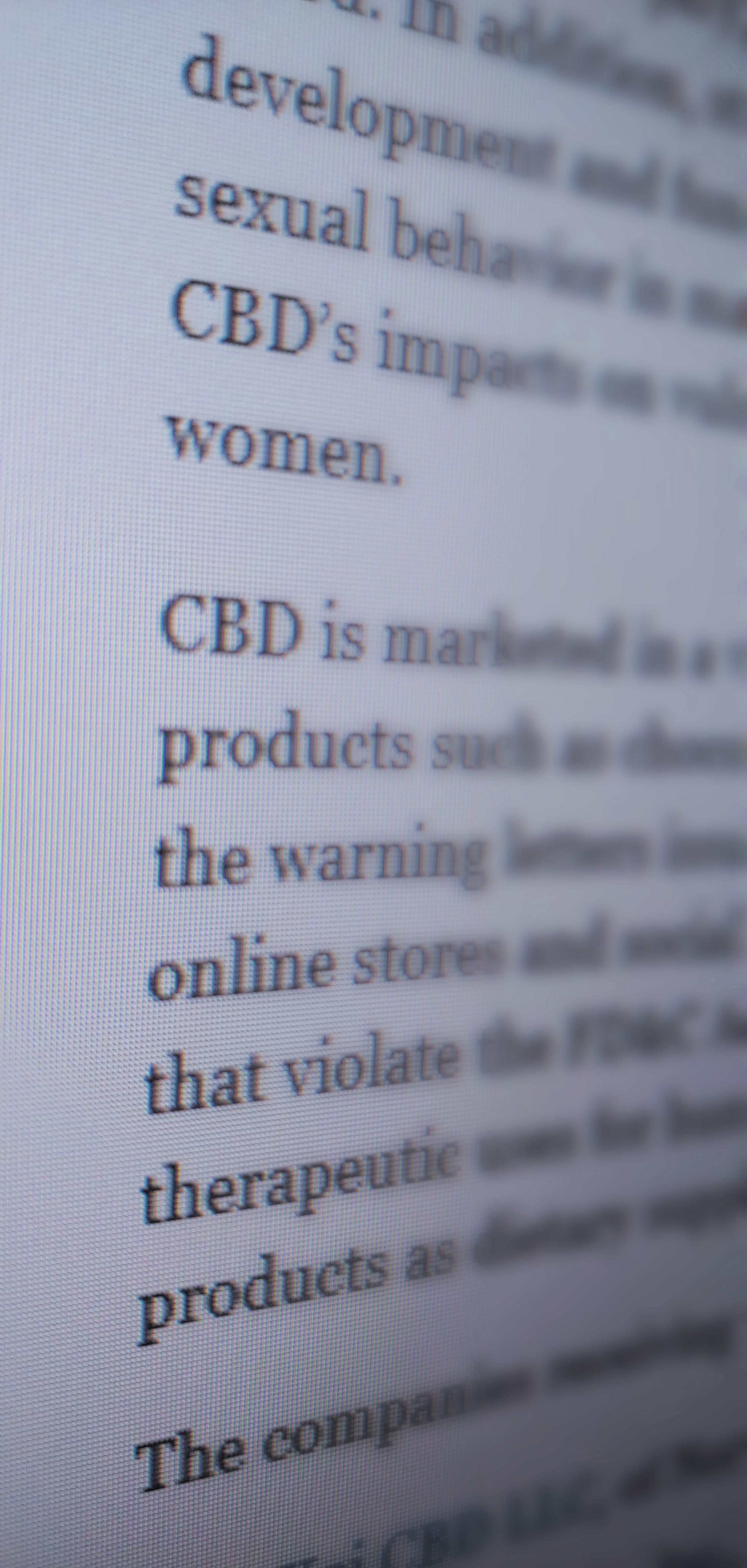
With the legalization of cannabis came a great deal of new stores and products containing the plant-based drug, and in many forms. The question is, are all of these new methods of ingestion safe or healthy? This is a topic that has come under heavy scrutiny as there isn’t enough scientific information regarding the safety of cannabinol in food. The FDA is cracking down on companies that are ignoring the possibilities of health issues that could be caused by their products. Take a look at this article to find out what you need to know!
Read here!
Feature articles went on a break for the month of December.
The Mountain, Revisited
A Tribute to Tate MacDowell
This month we would like to celebrate the amazing life of Videographer, Artist and Poet Tate MacDowell. Tate is an inspiration and hero in the Cancer Warrior community. He conquered the belief that cancer and treatment side effects can limit the life style of patients, and he proved that his spirit was stronger than any mountain. Here’s to him, his accomplishments and the wonderful works he created for us all!
Take the time to read the article with artwork and poem about Tate’s experience with cancer and treatment: “Mountain in the Hallway”. Then, -more importantly- read his blog and see his triumph over the Grand Tetons.
Mountain in the Hallway: Words & Artwork by Tate MacDowell
Reaching the Summit of the Mountain in the Hallway
Good Vibes For Better Health: The emerging science of positive emotional state of mind and health
by David Muehsam, Ph.D
first published on February 28, 2018 through www.chi.is
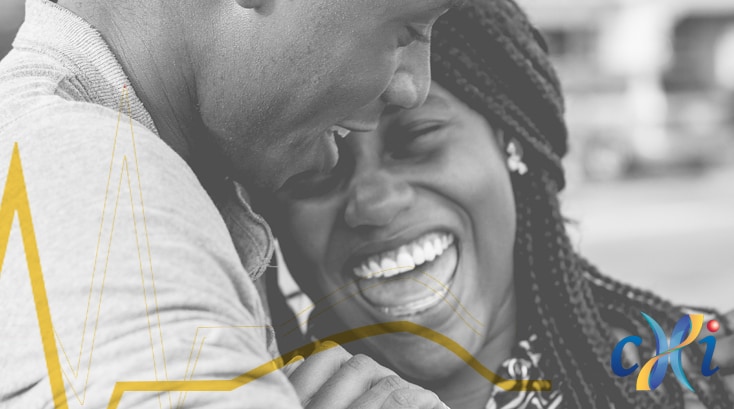
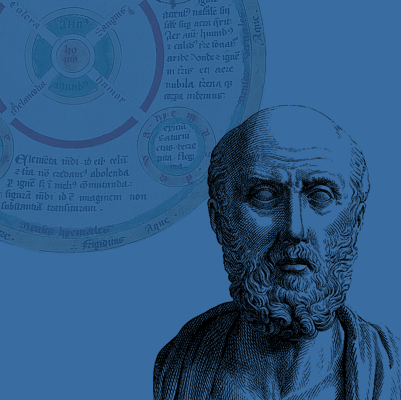 The idea that emotions are linked with physical health is nothing new. 2400 years ago, Hippocrates posited that good health is due to the balance of four bodily humors, which also contribute to one’s temperament (Sternberg 1997). And throughout the history of medicine, the dominant belief has been that mental, emotional and spiritual factors are the primary causes of both health and disease, until this viewpoint was surpassed by advances in modern biology that promoted a chemistry-based view (Kiecolt-Glaser 2002).
The idea that emotions are linked with physical health is nothing new. 2400 years ago, Hippocrates posited that good health is due to the balance of four bodily humors, which also contribute to one’s temperament (Sternberg 1997). And throughout the history of medicine, the dominant belief has been that mental, emotional and spiritual factors are the primary causes of both health and disease, until this viewpoint was surpassed by advances in modern biology that promoted a chemistry-based view (Kiecolt-Glaser 2002).
Over the last two decades, the idea that emotions and the mind play important roles in health has reemerged in biology. While modern biochemistry has focused on the molecules that make up our bodies, the emerging field of psychoneuroimmunology has provided new insights into the connections between these molecules and our mental and emotional selves. For example, fifteen years ago, a review by Janice Kiecolt-Glaser at Ohio State University concluded that negative emotions such as depression and anxiety are associated with higher risks of mortality, heart disease and cancer, and can contribute to prolonged infection and delayed wound healing (Kiecolt-Glaser 2002). Kiecolt-Glaser also reviewed the biochemical correlates of stress and negative emotions, and showed that negative emotions are associated with increased pro-inflammatory activity and compromised immune and endocrine system responses, all of which can contribute to poorer health (Kiecolt-Glaser 2002). Similarly, a series of studies from the group of Steve Cole at UCLA showed that stress due to social isolation and loneliness is associated with increased pro-inflammatory signaling and reduced immune system responses, and that this psychosocial stress is actually reflected in DNA activity through the expression of the particular genes that regulate these health-critical activities (Cole 2014).
Well, these studies showed that stress and negative emotional states are linked with negative health outcomes. But what about positive emotional states? Could these have positive impacts on health? Could cultivating better emotional health be a path to better physical health?
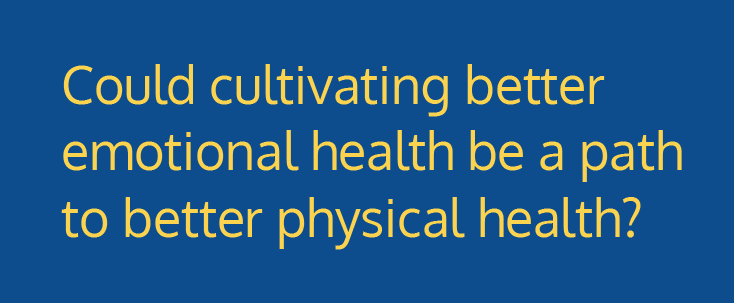
We’re beginning to have better answers to these questions. Data from a long-term study on aging by the US Veterans Administration showed that overall psychological distress (measured by anxiety) and well-being (measured by happiness and life satisfaction) had opposite effects on DNA activity for genes that regulate the inflammation associated with coronary heart disease (Kim 2015). And another answer may lie in a recent study from Jennifer Stellar of the University of Toronto which linked seven positive emotions – amusement, awe, compassion, contentment, joy, love and pride – with levels of the pro-inflammatory signaling molecule Interleukin-6 (IL-6) in samples taken from freshman undergraduates (Stellar 2015). Participants answered questionnaires that assessed how much they generally experience particular emotions, measured by how strongly they agreed/disagreed with statements such as “I feel wonder almost every day” (awe), or “I am an intensely cheerful person” (joy). Stellar found that awe, joy, contentment, and pride were each correlated with lower pro-inflammatory IL-6 levels, and interestingly, when all of these emotions were pooled together in a group analysis, one of them was found to be the strongest predictor of low IL-6: awe.
I already find it quite awe-inspiring that awe was the emotion most highly correlated with lower IL-6 pro-inflammatory signaling, but Stellar went one step further: she also asked the participants how much awe, wonder, and amazement they felt on the day of the test, and found that the daily values for these three emotions were also correlated with lower levels of IL-6, with awe again being the strongest predictor.
Awesome! Can you bottle that?
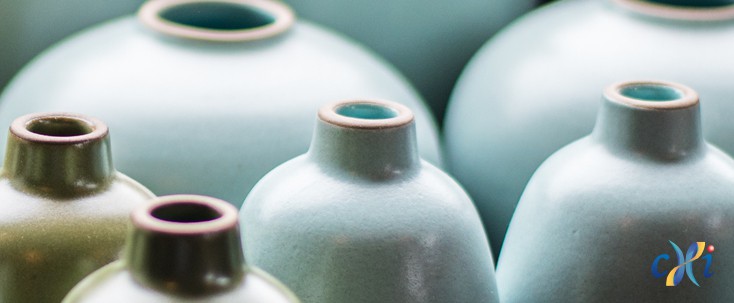
Well, but we need more long-term studies to better understand to what degree putting out the good vibes every day could lead to better health, make one live longer, and perhaps treat particular diseases. What we do know today is that our emotional and social wellbeing is indeed linked with our health, and science is beginning to better understand how our inner world of feelings is as real as the atoms and molecules that make up the cells in our bodies.
References
-Cole SW. Human social genomics. PLoS Genet. 2014;10(8):e1004601.
-Kiecolt-Glaser JK, McGuire L, Robles TF, Glaser R. Emotions, morbidity, and mortality: new perspectives from psychoneuroimmunology. Annu Rev Psychol. 2002;53:83-107.
-Kim D, Kubzansky LD, Baccarelli A, Sparrow D, Spiro A 3rd, Tarantini L, Cantone L, Vokonas P, Schwartz J. Psychological factors and DNA methylation of genes related to immune/inflammatory system markers: the VA Normative Aging Study. BMJ Open. 2016 Jan 5;6(1):e009790.
-Rush SE, Sharma M. Mindfulness-Based Stress Reduction as a Stress Management Intervention for Cancer Care: A Systematic Review. J Evid Based Complementary Altern Med. 2016 Aug 3. pii: 2156587216661467.
-Stellar et al. 2015 Positive affect and markers of inflammation: discrete positive emotions predict lower levels of inflammatory cytokines. Emotion. 15(2):129-33.
-Sternberg EM. 1997. Emotions and disease: from balance of humors to balance of molecules. Nat. Med. 3:264–67.
About Dr. David Muehsam
Visit the Consciousness & Healing Initiative website.
Back to the top.
Digging Out of Debt for Cancer Survivors
by Jeannette Moninger
As you are being treated for cancer the last thing you want to think about is what it is doing to you financially. The cost of therapies has increased as well as the cost of health insurance. Even with the best health insurance there are deductibles & out of pocket expenses. Where can you turn to for help with this debt that you are incurring?
This article shares the financial experiences of cancer survivors & the resources available to help with debt.
Click here to read the article.
Healing Grief Thru HeArt
by Alessandra Colfi, PhD
A mother and her daughter walk in, their faces showing their efforts to cope with the tragic, sudden death of their son and brother, the shock, the sleepless nights, trying to make sense of their devastating loss, trying to forgive.
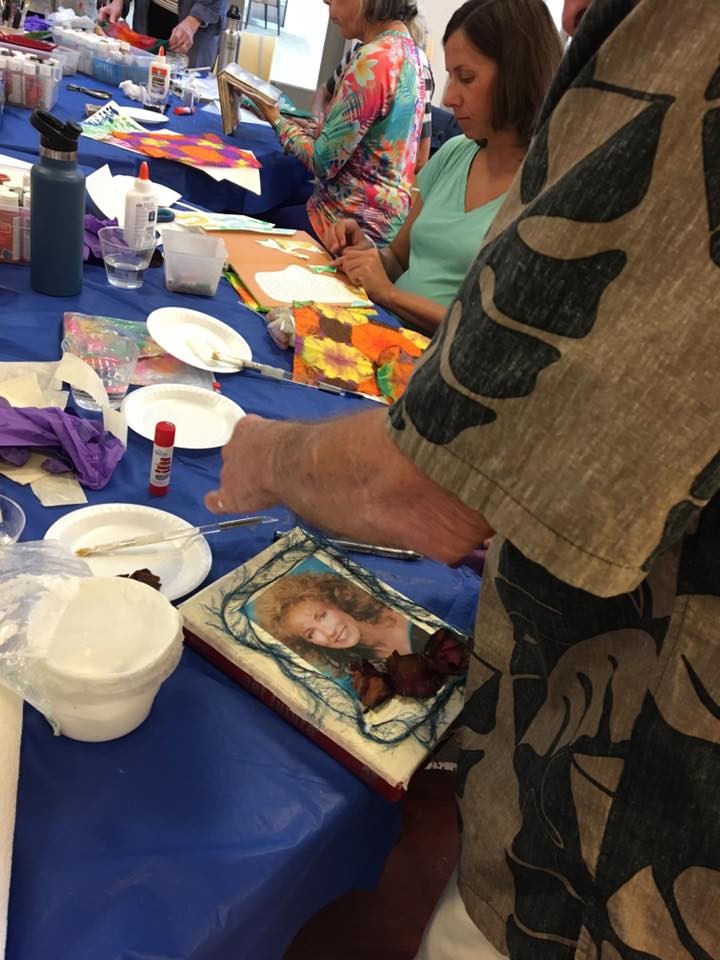 A gentleman joins in not sure if this grief processing group is for him, certain that no relief or healing is possible after the long illness and death of his wife, his partner through thick and thin, the love of his life; he shows me one of the many poems he wrote to express the love they shared, and to keep his wife present and their memories alive… Others have also lost spouses, children, siblings, parents, close friends; they join in as they open up to a different kind of support, a compassionate, safe place where they look forward to being embraced and to restore hope for a life worth living.
A gentleman joins in not sure if this grief processing group is for him, certain that no relief or healing is possible after the long illness and death of his wife, his partner through thick and thin, the love of his life; he shows me one of the many poems he wrote to express the love they shared, and to keep his wife present and their memories alive… Others have also lost spouses, children, siblings, parents, close friends; they join in as they open up to a different kind of support, a compassionate, safe place where they look forward to being embraced and to restore hope for a life worth living.
I, too, have lost loved ones; I have lost many patients I have worked with, so I have been focusing on holding a safe, compassionate space for their grieving friends in the cancer community, grief layered with fear, a reminder of their own vulnerability.
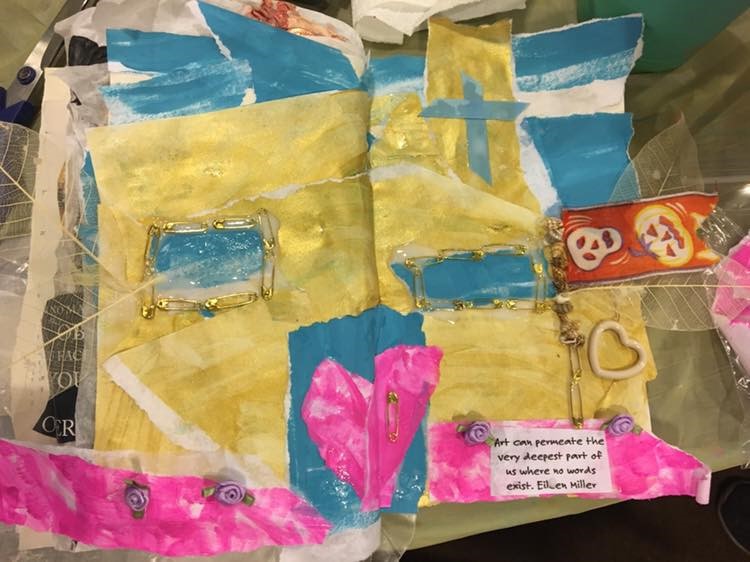 Grief is not easy to be with, or to talk about; words seem to lack the depth and nuances of despair, unsurmountable loss, as well as questions and longing for an ever-lasting connection beyond the physical presence. Often various degrees of guilt, challenging family dynamics, and ancestral wounds are present and need to be a part of the transformation as well.
Grief is not easy to be with, or to talk about; words seem to lack the depth and nuances of despair, unsurmountable loss, as well as questions and longing for an ever-lasting connection beyond the physical presence. Often various degrees of guilt, challenging family dynamics, and ancestral wounds are present and need to be a part of the transformation as well.
At the end of the 6 weeks-series a mother remarks “Even as a parent who lost a child, I found my voice and some solace”
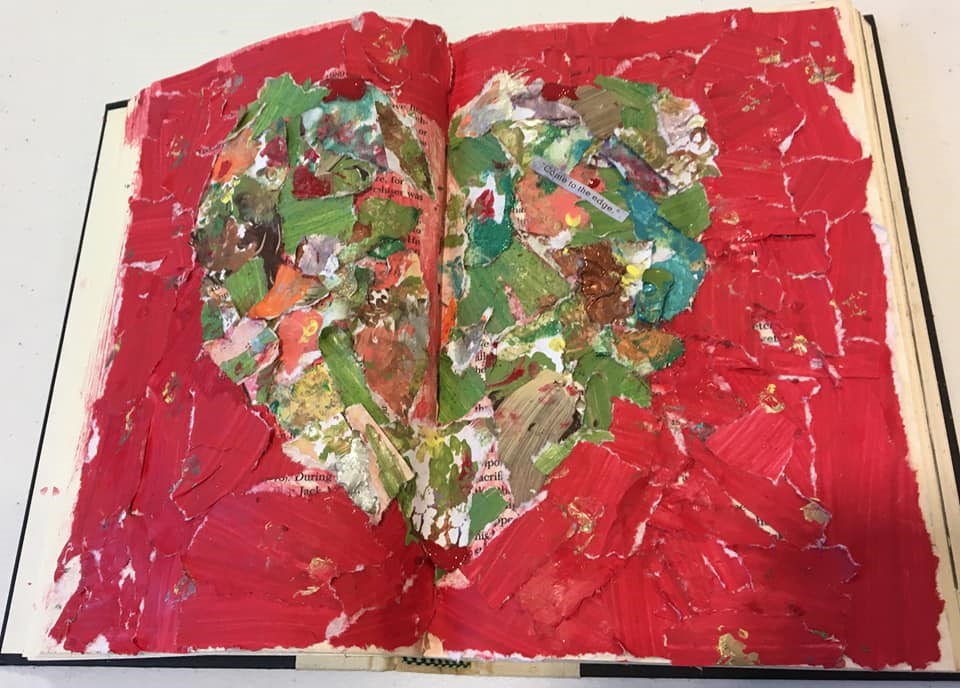
The Broken Pieces of Our Hearts
The seeds of Healing Grief Thru HeArt program were planted when I engaged patients in the visual journal / altered book series ‘The Artful Book of Wonders’, one of the many expressive arts therapy series I offered at San Diego Cancer Research Institute and more recently at UC San Diego Moores Cancer Center; this format facilitates self-exploration for patients, while validating their experiences and feelings during their cancer healing journeys.
While nurturing the fertile ground of seeking answers and meaning when patients are confronted with cancer’s life-altering experience, and encouraged by my colleagues and mentors, I was presented with strong interest from our friends at The HeartWay to offer expressive arts processes to assist individuals experiencing grief from the death of a loved one.
The non-profit The HeartWay (The HeartWay, Embracing Life. Honoring Death.) provides an integrative approach to the healing of body, mind, and spirit for those confronting a life-threatening illness, critical lifestyle change, or finding themselves caring for someone with a critical illness before, during, and after death. All services are provided free of charge to the requesting individuals and families.
The experience of grief is a subtle, often unacknowledged but powerful presence in cancer patients as life is turned upside down, the body altered by surgeries and treatments, by often limited diets with a change in or loss of appetite, and limited mobility… grieving what was, the healthy self (even if not objectively healthy, but subjectively felt as healthy); one’s identity tied to body image, relationships, a career, is interlaced with challenges in their cognitive abilities (aka, brain fog); fear and anxiety of more pain, decline in quality of life, of ‘losing the battle’, all making it as a deeply personal as one can imagine.
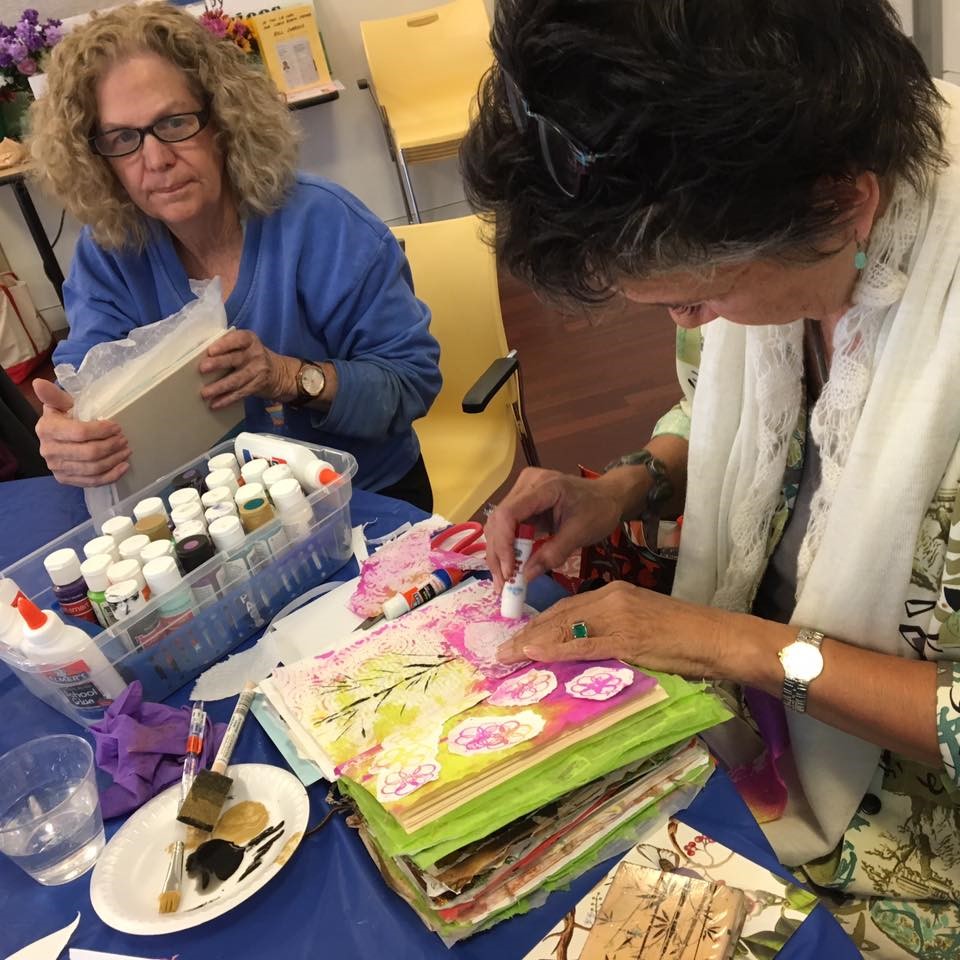
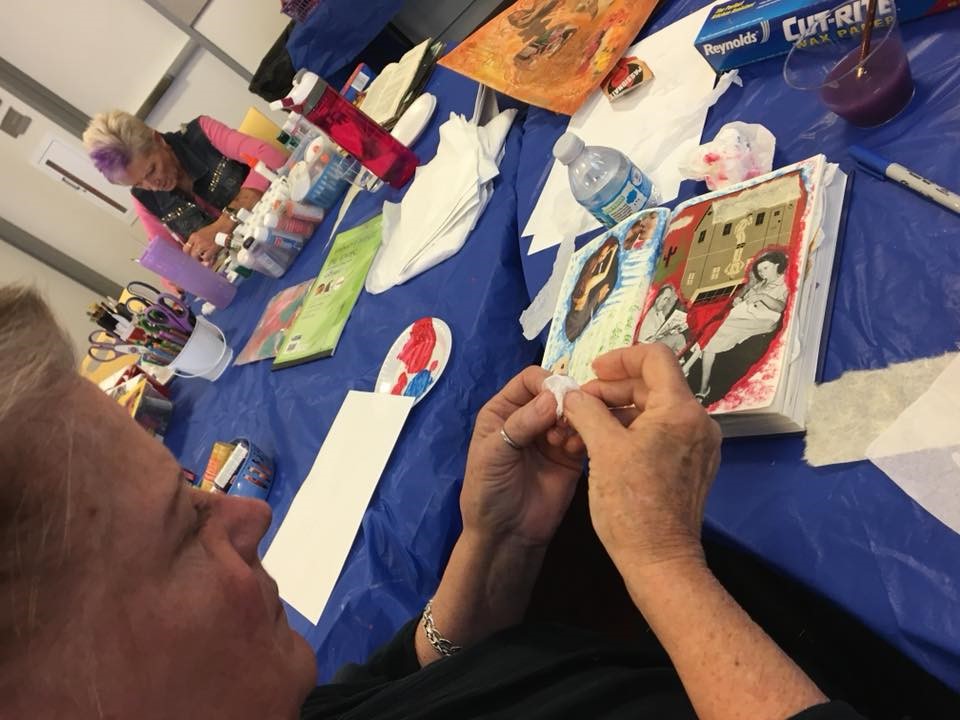
Healing Grief Thru HeArt (HGTHA) program was launched in 2017; it is dedicated to facilitating healing for those individuals, families, and communities working thru grief after a loved one has died. The expressive arts offer short and long-term coping tools while promoting empathy, support, mindfulness, inner peace, healing, and compassion. There is abundant research literature to support the use of the arts as therapy and as an adjunct to other forms of therapy. Participants in the program experience a feeling of revitalization, renewed meaning and connection with life in the broad sense, becoming more active and re-engaging in their communities. In 2017 we completed 3 series of 6 weeks each at a Senior Center in Orange County; in 2018 we held a 6-week series for the residents at an Affordable Housing Community in Los Angeles.
One of the formats used is a unique visual journal created in the pages of an old, discarded hardcover book, playing with any text existing but not interfering with our new images, colors, brush strokes, poems, and collage materials; participants take advantage of the unique, engaging opportunities that the creative process offers, because the therapeutic distance, non-intimidating qualities of using art for self-exploration and self-expression are well known, no matter what artistic abilities or familiarity with art-making they have.
The layered artful pages are generated through the mindful attention of expressive arts processes meant to bypass the logical, rational thought processes of cause-and-effect, expectations, limiting judgment, habitual thinking patterns; instead the artwork evokes wonderment, truth, wisdom, imaginative qualities, personal meaning, and reveals psychic content of present awareness through images, colors, as safety and acceptance are established.
Participants are also supported through breathing exercises, meditation, Emotional Freedom Technique (EFT), inspirational and visually stimulating videos.
This program offers an expressive approach to healing grief outside the paradigm of cognitive therapy. The traditional ‘The Five Stages of Grief’ model was first introduced by Swiss-American psychiatrist Elisabeth Kübler-Ross in her 1969 book “On Death and Dying”, inspired by her work with terminally ill patients. As recent literature and practice inform us, the stages of denial, anger, bargaining, depression, and acceptance are not necessarily experienced in order, but rather they “are a part of the framework that makes up our learning to live with the one we lost. They are tools to help us frame and identify what we may be feeling. But they are not stops on some linear timeline in grief. Not everyone goes through all of them or in a prescribed order. Our hope is that with these stages comes the knowledge of grief‘s terrain, making us better equipped to cope with life and loss. At times, people in grief will often report more stages.” (David Kessler https://grief.com/the-five-stages-of-grief/)
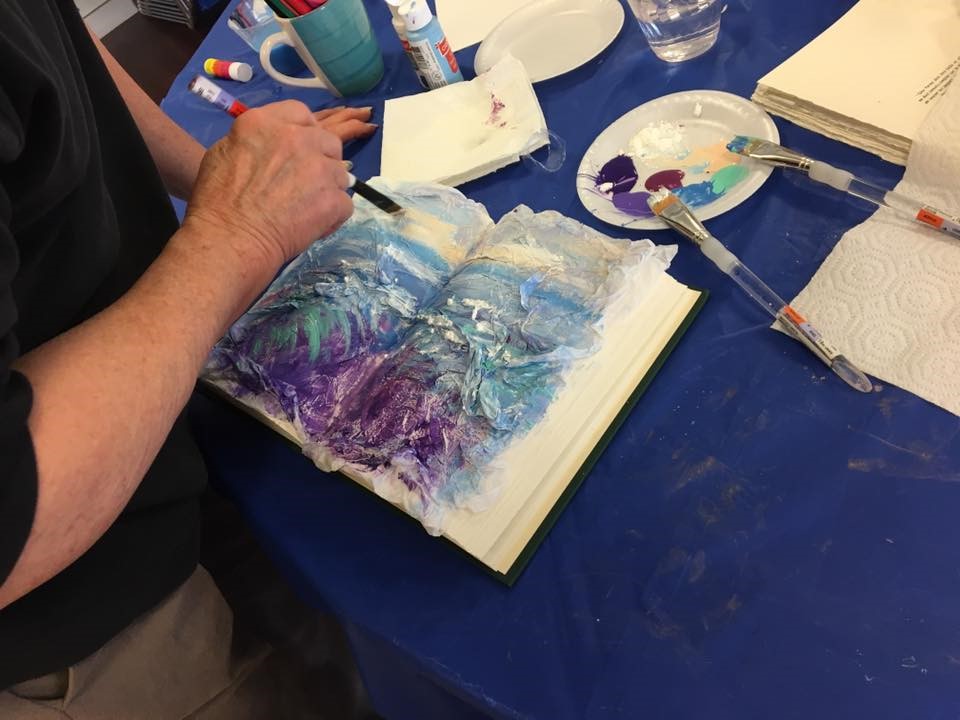 Landscape of Emotions
Landscape of Emotions
I use the expressive arts to engage participants in a non-judgmental, compassionate, and inviting way, by focusing on the process rather than on the finished product. This provides participants the safety of the therapeutic distance to the painful experiences. The experience of grief and our relationship with it are transformed, as meaning takes form and healing occur. The approach of the program is person-centered: flexibility and meeting each group member where they are in the grieving process, emotional/mental readiness, abilities, group harmony, and mutually supportive atmosphere are all key elements to my client-centered approach, with supportive and helpful guidance. Participants learn to see more options and retain a degree of control; “mistakes” can be transformed into meaningful images, empowering opportunities, and unique beauty. The process allows individuals to gain awareness, access and work with their fears and pain, and find meaning to anchor their existence. The intended outcome includes finding comfort in uncomfortable experiences, acceptance, healing, and transformation.
Monthly group sessions are currently offered in Encinitas on Saturdays, with the plan of increasing frequency in the fall, as we anticipate increased interest and awareness.
Individual sessions are also available and encouraged to offer even more privacy, customized processes and to offer the most compassionate support as complex feelings and trauma might emerge.
As a result, participants experience validation of their feelings, explore safe ways to acknowledge, share and process loss, while building coping skills, resilience, and a meaningful life without their loved ones, and a renewed sense of purpose, while able to hold painful and joyous memories.
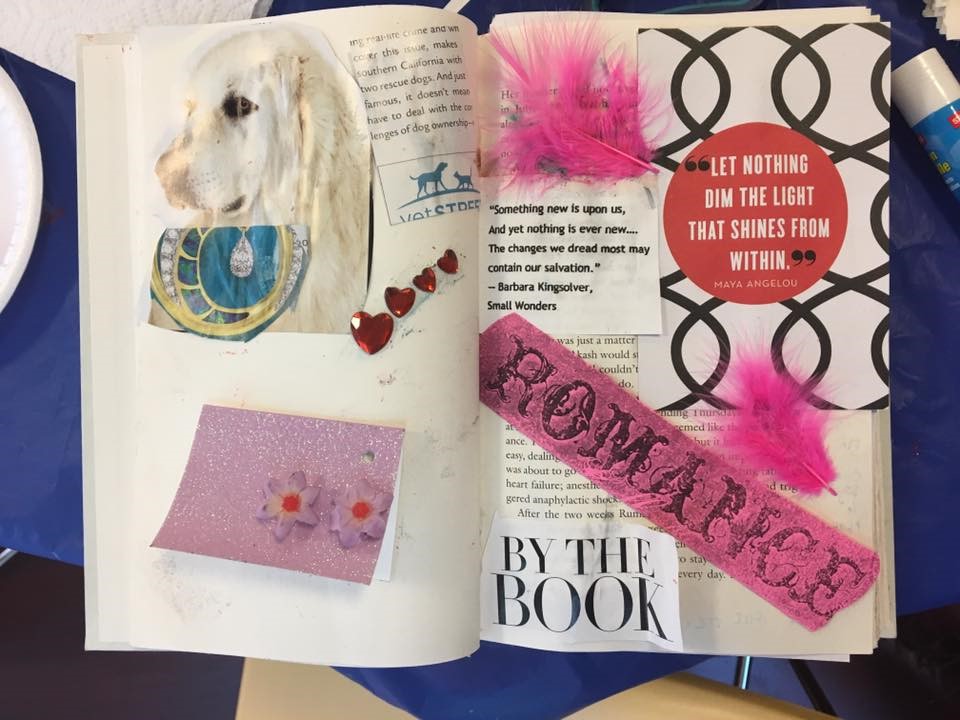
Here is what some participants share about their experiences with the program:
‘A truly wonderful and healing class; I wish it were longer!! Very grateful to be a part of this group.’ -M.T.V.
‘Thank you for your gentle, thoughtful directions’ -D.G.
‘Alessandra created sacred space to express through art what is alive in my grief and healing’ -J.S.
‘I would highly recommend the class to anyone who is experiencing grief’ -C.A.C.
‘All activities were very pertinent and I found value in each and every one. Alessandra will lead you to places you never knew were part of you’ -B.V.
‘Very healing, loved being embraced.’ – C.O.
‘Loved the classes. So glad this was offered. Lovely connecting with new friends. Alessandra is fabulous.’ -D.S.
‘This class was the highlight of my week during this difficult time…’ – Anon
“Even as a parent who lost a child I found my voice and some solace” – Anon
Recently at The HeartWay we created a HGTHA video to convey the transformative power of engaging with the arts and to validate the courage and compassionate presence of our participants. By sharing this video, we want to encourage others to reach out for support in moving forward with their grief.
Our intention for this program is to support families and individuals thru their grieving process and at the same time to celebrate the lives of loved ones through the expressive arts. Together we observe, validate, and process the many aspects of seeing a loved one die and the complex feelings and emotions that individuals and families go through. Our intention is to cultivate each person’s innate resilience, restore hope, and support life joy and fulfillment.
~~~
For information, to participate in a HGTHA group, or for additional resources, please contact Alessandra Colfi, Ph.D., Expressive Arts Therapist, at 858 735 5708 Alessandra@AlessandraColfi.com

Putting the pieces back together

https://www.theheartway.org/ ~ FB: @healthruheart
About Alessandra
Back to the top.
Understanding The Connection Between Addictions and Cancer
by Patrick Bailey
Cancer is caused by multiple factors, however, another risk that is often overlooked are addictions to certain substances. In this post, we will discover the link between addictions and cancer.
On a surface level, substance abuse may be mostly attributed to psychological symptoms–these include changes in behavior, personality, or ability to interact with others. The most apparent complications would be mental health concerns, but it is important to know that the physical risks of taking drugs are just as harmful as the psychological risks.
What are the physical risks of substance abuse?
Substance abuse is a complex mental and physical condition that affects the individual in a myriad of ways. Its risks are mostly seen psychologically in the earlier stages, but in a full-blown addiction, the effects may span towards long-term physical problems.
The risks also depend on the type of addiction that the individual may have. Here are some of the most common types of addictions and the physical risks associated with them:
Smoking
Long-term smoking primarily affects the lungs and may cause functional problems. Additionally, since the lungs are also vital to the body’s circulatory system, it is possible that an addiction to smoking can cause heart problems as well. Some of the most common physical conditions related to smoking addiction include lung cancer, chronic pulmonary obstructive diseases (COPD), heart attack, emphysema, stroke, heart failure or lung failure.
Drugs
Addictions to illicit substances or prescribed medications also cause physical complications. Aside from the risk of a fatal overdose, the brain chemistry can be completely altered, causing problems such as Alzheimer’s Disease, Parkinson’s Disease, or stroke. Additionally, the manner of administering drugs may also cause certain types of cancers. Smoking, inhaling, or continued use of needles may alter the body’s immune system, making the people who have a genetic disposition increase their cancer risk.
Alcohol
Alcohol is an addiction that affects the liver. Chronic alcohol abuse is related to increased incidence of liver cancer, cirrhosis, liver failure, obesity and diabetes. When combined with smoking or drugs, alcohol can also be a contributor to many cardiovascular diseases such as heart attack, stroke, or cardiomyopathy.
With these common forms of addictions, it is interesting to note that cancer is a common denominator for each of the physical complications. Cancer can be considered a disease with a strong genetic linkage, but lifestyle factors such as addictions do contribute to its onset and severity.
What is the link between addictions and cancer?
In order to understand how addictions are related to cancer, it is important to initially have a basic knowledge of how cancer cells morph and spread.
Our body is composed of millions of cells. Each cell has a specific function, and they also have particular lifespans. Some of cells die, regenerate, or multiply depending on their type. These processes are relatively consistent yet change in different stages of an individual’s life. A child’s cells may rapidly develop, differentiate and multiply, while an adult’s cells may do these processes at a different pace.
Cancer happens when there is a single or multiple genetic mutation in one of the cells, and these cells eventually multiply and occupy the body. They cause tumors to form–which can either be benign or malignant. Benign tumors do not cause harm, and will only require intervention when they putting pressure on vital organs such as the brain or the heart. On the other hand, malignant tumors which are often diagnosed as cancers are those which invade the body’s tissue, affecting the function of the organs.
Now, the initial mutation is the trigger that causes cancer. These initial mutations are caused by several things such as:
- Genetic disposition – some types of cancers run in families. Blood-related cancers, those which affect certain organs (pancreas, liver, etc.), or others may affect certain family members of the same gender or age.
- Unhealthy diet – there is a link between cancer risk and people who consume high amounts of processed food and refined sugars. Unhealthy diet combined with genetic dispositions can cause cancers. All types of cells, both healthy or malignant feed on simple sugars as their sourer of energy, and this is why diet is very important for people who want to lessen their cancer risk.
- Exposure to chemicals – another factor that causes initial mutations are exposure to harmful chemicals. Those constantly exposed to radiation, ultraviolet rays, and toxic substances may have a higher cancer risk. These substances can enter the bloodstream and cause mutations in the cells of the body.
- Addictions – like chemicals, substance addictions also introduce foreign elements in the body that can cause mutations. For example, continuous smoking exposes the body to tar, carbon monoxide, and other harmful substances that can alter the DNA makeup of lung cells, causing malignant tumors to grow.
In essence, the constant exposure to substances through chronic addiction is a risk factor in cancer development. When this is combined with other factors such as genetic disposition, or occupational hazards, the risk continuously increases which can speed up the mutations or heighten the severity of the cancer.
Complications of addictions and cancer
Addiction is a condition in itself, and developing a complication such as cancer from it can pose a serious toll on the body. It is important that a person diagnosed with cancer and substance use problem should deal with both conditions as soon as possible. Early intervention for both diseases is important for a positive prognosis.
What should be addressed first, the addiction or the cancer?
Both are life-threatening conditions, and if it is possible, the cancer can be initially treated by undergoing prompt medical treatments combined with rehabilitation from substances. Usually, major cancer treatments come in first followed by substance abuse rehabilitation. In other cases they can be combined when it is medically and logistically possible.
Some types of cancer are detected early, and the patient needs to undergo certain lifestyle changes with surgical or chemo-based intervention to remove the tumor. After the major procedure, the patient can be asked to adopt lifestyle alterations such as cutting out substance addictions, eating a healthy diet, and physical activity.
I am noticing signs of cancer, and I also have an addiction problem. What should I do?
Here are the following steps you can take to address both your addiction problem and a potential diagnosis for cancer.
Talk to your doctor.
The first step you have to take is to talk to your primary care doctor and be open about your addiction problem and signs that you are noticing in your body. If you are predisposed to certain types of cancers or you have been indulging in a lifestyle that poses a high cancer risk, it is helpful to know the common signs of cancer. Your primary care doctor can refer you to an oncologist to help get a clearer diagnosis.
Additionally, your doctor can help refer you to rehabilitation services that can help with the addiction problem once the diagnosis has been finalized. Many substance abuse rehabilitation centers offer a myriad of medical and holistic interventions to help in addiction recovery. Addiction recovery can help you make better lifestyle choices which can also prevent you from having recurring cancers.
Get the support that you need.
It can be tough to receive a diagnosis of two difficult physical conditions. You may often wonder how your life may change, and this challenge is best dealt with if you have a source of support. Support can come in many forms. You can share your condition with a trusted loved one who can empathize with your needs. Additionally, you can also find support groups for those who are currently undergoing cancer treatments or those who are trying to recover from addictions.
At first, you may feel vulnerable in sharing your story. However, you will eventually find strength in knowing that there are people who share in your journey, and you can also draw inspiration from them.
Maintain a healthy lifestyle.
It is never too late to start a new regimen to help in addiction recovery and to prevent cancer from recurring. Some of the best lifestyle changes that can both help in these conditions include:
- Eating healthy, whole foods: Consumption of vegetables, fruits, lean protein and whole grains are all linked to better physical and mental wellness compared to a diet composed of processed foods and refined sugars.
- Regular physical activity: Exercise helps in blood circulation and removal of toxins in the body that may cause cancer or substance dependence. It also rejuvenates vital organs such as the heart and lungs.
- Avoid stress: Stress is a risk factor both for cancer and addictions. When you have a high-stress lifestyle, it is likely that you will have a substance use relapse, which may lead you to go back to unhealthy habits that causes cancers.
Early detection and intervention is key
When it comes to treating substance use problems and cancer, it is best to have early intervention. Doing so can help reduce severe complications, and improve the chances of recovery.
How Physical Therapy Can Help Ease Cancer Pain
by Dr. Brent Wells
Chronic illnesses like cancer can have a dramatic impact on your ability to function in daily life. Your routine may be disrupted due to the pain associated with some of these illnesses. In particular, cancer pain can make your daily routines much more difficult or downright impossible. For many patients, integrative medicine is the best solution to their constant pain. This can include complementary therapies such as chiropractic treatments and physical therapy.
The majority of the world’s population will experience back pain at some point in their lives, whether it’s related to cancer pain or not. Physical therapy can be a great resource to alleviate some of these symptoms from chronic illnesses like cancer. Check out a few of these reasons why you may want to contact a physical therapist today.
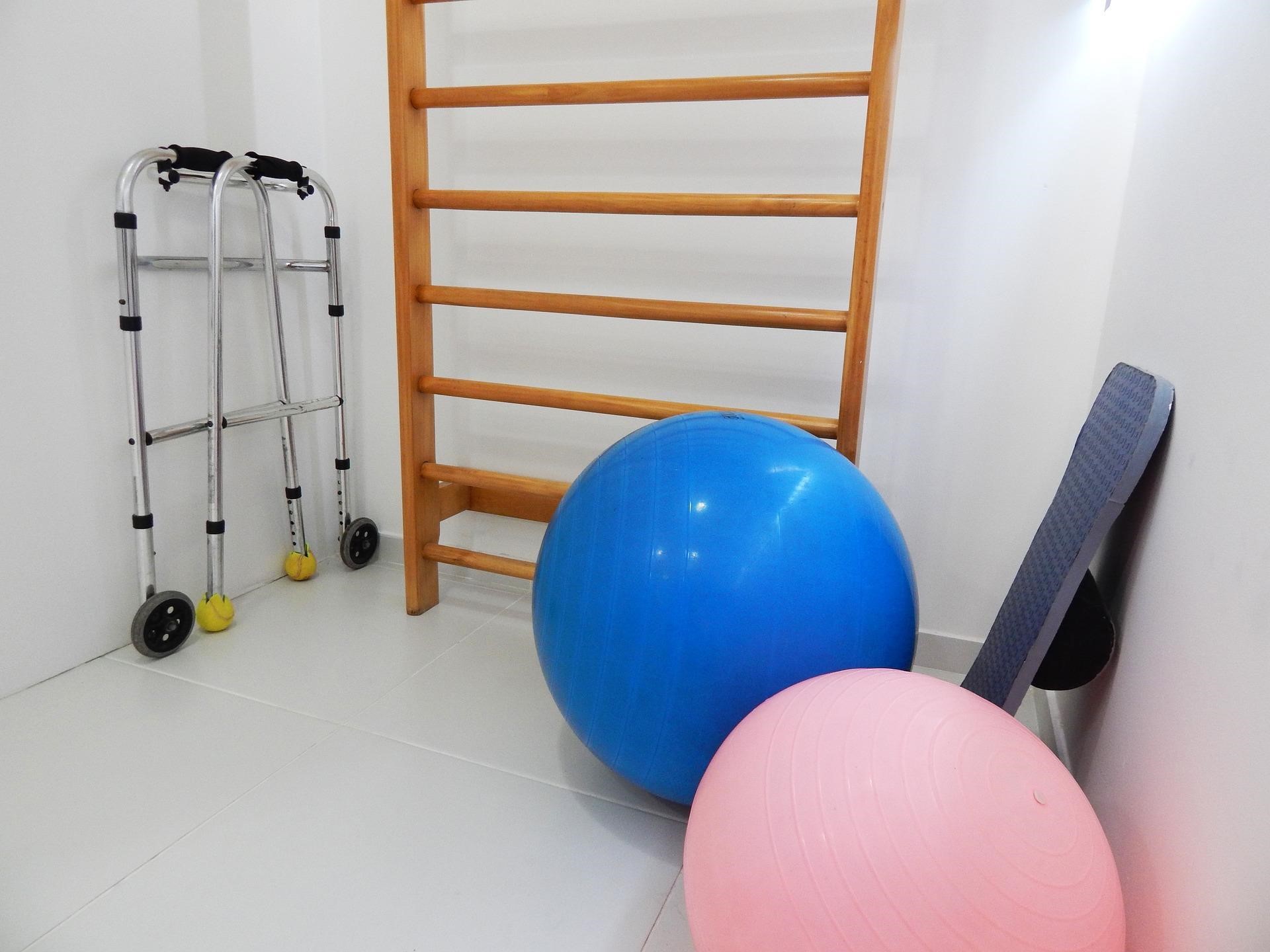
pixbay.com
Where Does Cancer Pain Come From?
Understanding where cancer pain comes from is essential to developing a thorough treatment plan. Physical therapy is capable of addressing many of the complaints that come from cancer pain. However, most patients do not really understand how it works because they cannot see where their pain stems from.
First and foremost, a growing tumor can be a large source of pain for many patients. The tumor is growing in size which means that it takes up more space in the body. It may begin to press on your nerves, muscles, bones, or organs. This pressure results in chronic pain in the affected area. As the tumor grows, it is also possible that the tumor will begin to emit chemicals that trigger a pain response in the body.
This type of pain can be treated using physical therapy. Improving your physical fitness and staying active offers a multitude of benefits for your cancer pain, including:
- Stronger muscles that are not likely to atrophy
- Reduced risk of osteoporosis
- Improved blood flow to your lower extremities
- Reduced risk of anxiety and depression
- Less fatigue
- Improved quality of life
How Does Physical Therapy Help?
Physical therapy is particularly important for individuals who have chronic pain conditions like those caused by cancer. When you are diagnosed with a chronic illness, many doctors immediately recommend that their patients restrict their activity and increase their bed rest. While you may need to restrict your exercise to low-intensity workouts, this advice could result in a greater degree of pain. Physical therapy can help to combat some of the symptoms seen as a result of excessive bedrest.
Patients who participate in physical therapy are more likely to minimize their deconditioning and myofascial pain associated with their lack of movement, according to research. Physical therapy focused on retaining muscle movement and strength can reduce pain symptoms associated with muscular atrophy.
One of the other major reasons that physical therapy helps cancer pain is by reducing fatigue. Many patients resort to bedrest because they lack the energy to combat their pain and participate in social activities. When they experience greater levels of fatigue, they are more likely to resort to bedrest and to allow their muscles to atrophy. On the other hand, patients who actively participate in physical therapy can greatly improve their energy levels.
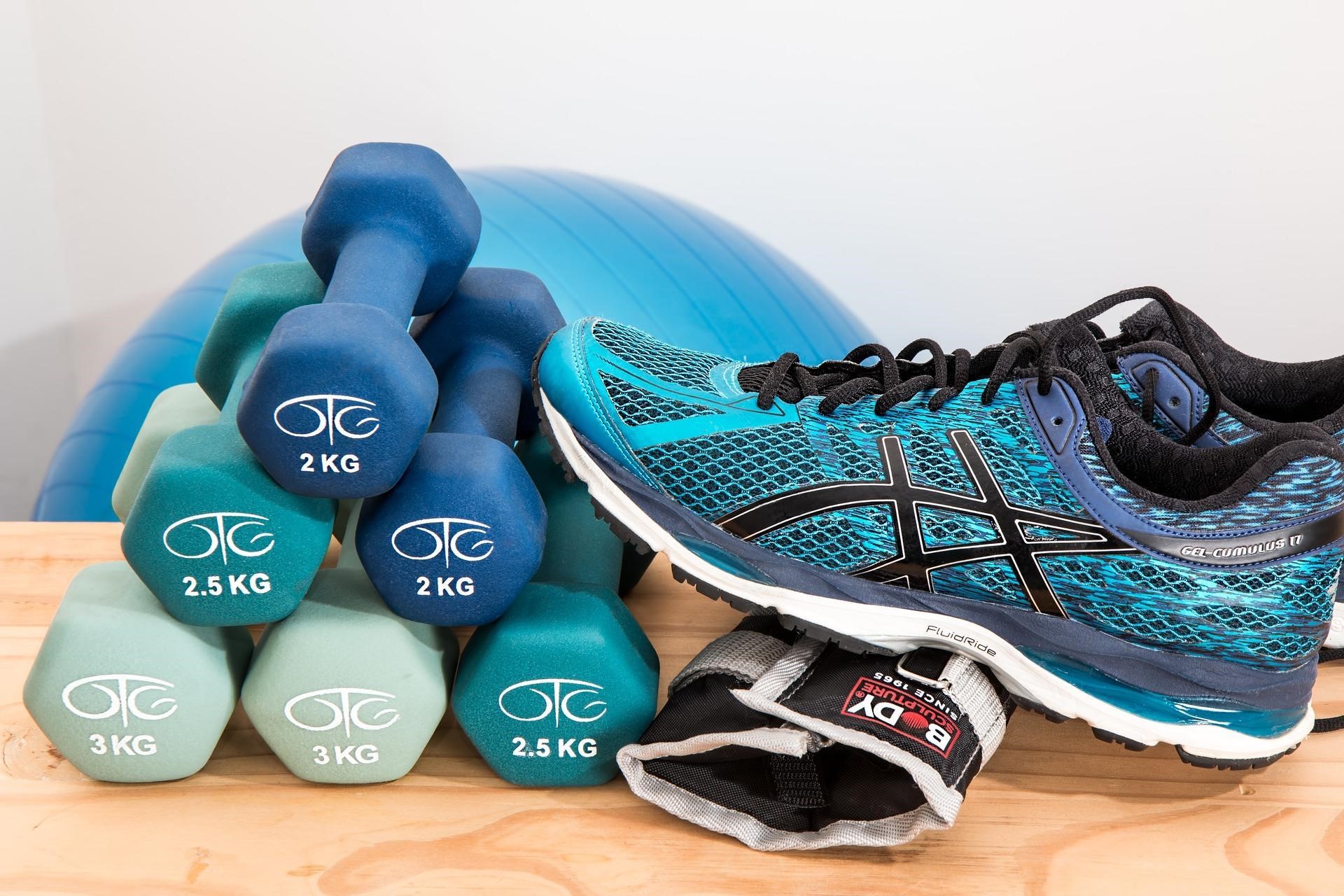
pixbay.com
Recovery from Surgery
Doctors will often recommend that patients undergo an intense surgery in order to remove the cancerous cells from the body. These procedures can severely limit your range of motion and increase the amount of pain you experience. While it may be necessary to remove the cancer from the body, it will require a lengthy recovery to restore your body to its former state.
Physical therapy is designed to help you restore your range of motion after surgery. Many physical therapists will prescribe static stretching exercises to increase your range of motion. However, there are many other types of stretching and exercises that can be applied to improve your overall ability to move around.

pixbay.com
Another side effect of these surgeries is potentially poor posture. Experts say that many people will begin to instinctively position their body to protect the surgery site from further pain. This results in a hunched posture that leads to chronic neck or back pain over time. Physical therapy can strengthen your core muscles and help you to improve your posture, effectively reducing the pain you experience from poor posture.
Types of Physical Therapy for Cancer Pain
Not all physical therapy is created equal. Many patients associate physical therapy with stretching exercises and aerobic activity designed to get your heart pumping. These can be accurate depictions of a physical therapy appointment, but there are other options available. Depending on your unique type of cancer pain, your physical therapist may recommend a different approach to your treatment.
There are two main categories of physical therapy: passive physical therapy and active physical therapy. You may not immediately think of some of these passive strategies for tackling your chronic cancer pain:
- Manual therapies
- Heat and cold therapies
- Electrical stimulation
- Ultrasound therapy
- Dry needling
- Cupping
Active physical therapy requires a little bit more energy on your part. It requires specific movement exercises such as stretching, strength training, or participating in a low-impact aerobic activity. Each exercise is designed to relieve your pain, increase your range of motion, or reduce your overall fatigue in some capacity. Most patients require a combination of both passive and active physical therapy for the best results.

pixbay.com
Contacting a Physical Therapist
Cancer pain is likely to be a chronic sort of ailment that needs to be treated by a professional. While there are certainly some small things you can do on your own to alleviate the pain, physical therapy can offer a well-rounded approach to pain-free living. You can improve your range of motion, decrease your pain, and improve your overall energy levels with a few simple physical therapy appointments.
Treatment for your cancer pain is readily available at a physical therapy office near you. Take advantage of all that this form of treatment has to offer. You will be surprised by the end result and how it can impact your pain levels.
About Dr. Brent Wells
Back to the top.
Article series from The Journal of Oncology Practice
An Introduction from SDCRI’s Director, Daniel Vicario, MD:
From 1998 till 2014, at the San Diego Cancer Center, with the help of our San Diego Cancer Research Institute, we were able to offer to the cancer patients the best medical approach possible: a truly Integrative Oncology program; a combination of “the best of western allopathic medicine with a long list of evidence-based integrative complementary healing modalities.” This approach dramatically helped the cancer patients not only have a significantly improved quality of life but in some situations, a longer life expectancy. We saw first-hand how effective this truly integrative approach is. As mentioned several times in the past, we are forever grateful to all the volunteers who devoted their time, expertise and wisdom to make this Integrative Program so successful.
As firm believers of Integrative Oncology, we are encouraged to see more articles being published in highly respected journals about the importance of Integrative Oncology.
A New Frontier for Evidence-Informed Integrative Oncology Care
by Gabriel Lopez, MD
May’s featured article is the last of the three articles suggested by Dr. Vicario. A New Frontier for Evidence-Informed Integrative Oncology Care is commentary on the first article of this series, which we posted in March. Click the title link to find out what Dr. Gabriel Lopez has to say on the practices of Integrative Oncology.
Implementing Integrative Oncology: Hopes and Challenges
Heather Greenlee, ND, PhD and Zaixing Shi, PhD
For the month of April, we are featuring a short article citing some of the difficulties in providing integrative oncology therapies and information to oncology patients. Integrative and complimentary therapies are in high demand among cancer patients, but not all patients understand what the benefits and limitations of therapies.
Click here to read the article.
Putting Integrative Oncology Into Practice: Concepts and Approaches
by Shelly Latte-Naor, MD1 and Jun J. Mao, MD, MSCE1
For the month of March contributing page, we feature an article “Putting Integrative Oncology into Practice – Concepts and Approaches”, published in the Journal of Oncology Practice from ASCO (American Society of Clinical Oncology) in January 2019. We found it very fitting to our beliefs and our past experience.
Click here or on the image below to read this article.
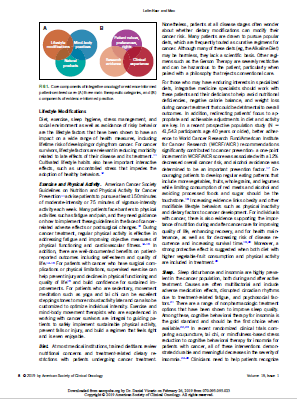
Back to the top.
Food is medicine: How US policy is shifting toward nutrition for better health

udra11/Shutterstock.com
by Dariush Mozaffarian, Jerold Mande, and Renata Micha
In this new year, millions of Americans will make resolutions about healthier eating. In 2019, could U.S. government leaders further resolve to improve healthier eating as well, joining public health experts in seeing that food is medicine?
In 2018, Congress initiated a series of actions that represent a shift away from placing the full responsibility – and blame – on individual people to make their own healthier choices. These actions also show a growing recognition that many stakeholders – including the government – are accountable for a healthier, more equitable food system. This shift in thinking reflects an understanding that government can and should play a role in improving the diet of Americans.
As faculty members at Tufts University, our expertise spans clinical medicine, nutrition science, public health, policy analyses, Congress, federal agencies and government programs. It’s clear to us that the time is right for meaningful policy action to leverage food as medicine.
Why healthier eating is a national priority

beats1/Shutterstock.com
Poor diet is among the greatest health and societal challenges of our time, causing death and disability, soaring health care spending, budget challenges for governments and private business, diminished military readiness and population disparities.
Medicare and Medicaid, the government programs that pay for medical care for people over age 65, low-income families, and the disabled, now consume US$1 in $4 in the federal budget. In addition, nearly $1 in $5 in the entire U.S. economy is spent on health care, creating massive threats to the health of the national economy.
Diet-related diseases are major contributors to these expenses. For example, the annual medical and economic costs of heart disease and stroke are estimated at $316 billion; of diabetes, $327 billion; and of all obesity-related conditions, $1.42 trillion. These costs create enormous economic challenges for federal and state governments as well as for private American businesses, families, and individuals through rising health care premiums, out-pocket-costs, missed work and lower productivity.
Diet-related health burdens and costs also influence military readiness. Two-thirds of active duty military forces are overweight or obese, while 71 percent of young Americans are unable to join the military for one or more reasons, with obesity as the leading medical disqualifier.
The overall U.S. food system – including farming and imports, supermarkets and retail, restaurants and cafeterias, and food manufacturers – also reflects and contributes to profound disparities, especially among children. Minorities and the poor often have the worst diets, causing a vicious cycle of poor health, lower school performance, lost productivity, increased health costs and poverty.
Hungry for good food
As policymakers increasingly recognize the depth and breadth of these effects, they are beginning to act. In January 2018, House lawmakers created a bipartisan “Food is Medicine” working group, dedicated to innovations in nutrition policy to improve health and reduce diet-related health costs. Simply the existence of a group in Congress focused on “Food is Medicine,” which hosted multiple briefings for congressional staff on key legislation to integrate nutrition into federal policy, is an advance.
On June 7, 2018, Congress instructed the U.S. Government Accountability Office to perform a comprehensive assessment and accounting of all federal policies related to food, chronic diseases and health care costs. The GAO is the government “watchdog,” providing independent audits of agencies and policies. The GAO has been asked to investigate six specific questions across diverse federal agencies and programs, including the evidence linking diet to chronic diseases, the corresponding national and federal health care costs, and the current strategies and missed opportunities to reduce these risks and costs. A series of GAO reports on food policy will likely come out in 2019 and 2020. The launch of this investigation represents a federal milestone for its scope and recognition of the opportunities in food policy.
The 2018 Farm Bill, signed into law on Dec. 20, 2018, included several important provisions for healthier eating, especially in the Supplemental Nutrition Assistance Program (SNAP), which supports about one in seven Americans. This included expansion of the fruit and vegetable subsidy program to $250 million, a new $25 million Produce Prescription Program and strengthening of SNAP-Education, a $400 million/year nutrition education program. Several of these advances were recommended by the 2018 Bipartisan Policy Center report on healthier SNAP, chaired by former Senate Majority Leader Bill Frist, M.D., and USDA Secretaries Ann Veneman and Dan Glickman.
While there were advances in the Farm Bill, a proposed amendment to include pilot testing for medically tailored meals was rejected. Medically tailored meals are ready-to-eat, personalized meals provided at home to low-income patients with complex medical illnesses like cancer, HIV, diabetes or heart failure. Several recent studies show that providing medically tailored meals to patients is associated with reduced hospitalizations, emergency room visits and overall health care spending. While this is a missed opportunity in the Farm Bill, the state of California is currently testing the effects of medically tailored meals on health outcomes and costs in a $6 million Medicaid intervention across six counties, which will provide new evidence for possible future national expansion.
Your produce is ready

ABO PHOTOGRAPHY/Shutterstock.com
Among the Farm Bill changes, we believe that the new Produce Prescription Program holds special promise. Already offered by some nonprofit and private insurance programs, this new federal program will allow doctors to prescribe not just medications but also subsidized purchases of fruits and vegetables. While the $25 million represents a small relative investment, this direct federal commitment to evaluate produce prescriptions in health care has the potential to provide evidence to support future expansion throughout Medicaid and Medicare.
Together, these congressional activities in 2018 represent an evolution toward incorporating and addressing nutrition, diet-related diseases and their health care costs in federal policy. These actions build upon mounting public awareness of the central role of food in well-being; the accelerating consumer demand for, and corresponding industry shifts toward, healthier foods; and the growing recognition that individual consumers cannot be solely responsible for the current challenges in the food system.
Recommended policy actions
The recent congressional actions toward viewing food as medicine coincide with new scientific evidence on how specific government policies can improve nutrition and well-being, reduce health care costs and reduce disparities.
We believe that meaningful progress on these national challenges will require far more substantive policy changes that can make healthier eating the easy, accessible, less expensive option. Based on recent reviews of the science as well as our new research, particularly promising federal government strategies for consideration include:
- Strengthening of nutrition standards in schools, after school, early childhood education programs and child feeding programs, as well as in cafeterias at federal worksites and other federal facilities, such as prisons and Veterans Affairs hospitals.
- Federal incentives to incorporate nutrition into corporate worksite wellness programs, such as personalized, interactive technology platforms, gameification and economic incentives already available in private insurance and corporate programs.
- A federal excise tax on sugar-sweetened beverages and junk food, especially if tax revenues are used to subsidize healthier foods, making the latter’s prices both more affordable and closer to their true societal value.
- Integrating nutrition into health care, including in the electronic health record, medical education and licensing standards, fruit and vegetable prescriptions, medically tailored meals, provider quality and reimbursement guidelines, and risk-sharing arrangements that incentivize providers to improve the health of their communities.
- Leveraging the $70 billion per year SNAP program for better nutrition for low-income families, for example through further strengthening of SNAP-Education, increased subsidies for fruits and vegetables and a combined food incentive/disincentive program to nudge people toward healthier choices.
- U.S. Food and Drug Administration labeling standards and limits for additives such as salt, trans fat and added sugar; marketing standards to protect children; and evidence-based health claims for products that can help achieve better health.
- Increased federal research funding, including a new National Institute of Nutrition at the National Institutes of Health; as well as economic incentives for transparent public-private partnerships for health-focused food innovation and entrepreneurship.
Policy change is often not linear. Based on the significant impacts of nutrition on disease, health care, the economy, military readiness, disparities and the environment, federal actions in 2018 laid the foundation for nonpartisan federal leadership to create meaningful and lasting solutions.
Dariush Mozaffarian, Dean, cardiologist, professor, Tufts University; Jerold Mande, Professor of Nutrition, Tufts University, and Renata Micha, Associate research professor, Tufts University
This article is republished from The Conversation under a Creative Commons license. Read the original article.
SDCRI Review for the year 2018
by Daniel Vicario, M.D.
As a medical oncologist, I’ve had the privilege of working with a large number of cancer patients since 1985. It’s been an inspirational journey where I’ve learned so much from my patients and their loved ones that I’ve been feeling the need to share that knowledge from now on. Having been the medical director of two cancer centers for over two decades and being part of a community that created an integrative oncology program back in 1995, I am now able to take some time off from a very busy schedule, to reflect on the many things I’ve learned. This learning came from many teachers: cancer patients and their loved ones, nurses, colleagues, cancer center staff and practitioners of the many different healing arts.
Our San Diego Cancer Research Institute (SDCRI) is a nonprofit organization created in the year 2000 with two divisions: Genomic Oncology, directed by my business partner and dear friend Dr. Mark J. Adler, and Integrative Oncology which will be discussed here.
The integrative program started offering free complementary services in 1995 at the San Diego Cancer Center thanks to the generosity of several successful practitioners of the different healing arts who offered their time and skills as volunteers servicing the community of cancer patients. This program started at the San Diego Cancer Center in Vista and Encinitas with the intention of offering cancer patients the option of experiencing complementary healing modalities that were proven to improve their quality of life. It was open to all cancer patients in the San Diego community. This program was extremely successful, offering services to over 150 cancer patients every month with an average of 100 visits per week. At one point there were 50 active volunteers enrolled in the program. During its last ten years, the program’s coordinator was Mary Hollander, RN. Without Mary’s support and guidance we could not have reached everything the program was able to accomplish. Unfortunately, for the several reasons mentioned in previous news articles on this web site, the SDCRI’s free integrative services facility in Encinitas had to close in December 2014.
The good news is that the San Diego Cancer Research Institute remains active in its mission of education, collaboration and research. Since the closing of the free integrative services facility in Encinitas, SDCRI has continued its education and research collaborative efforts with several other institutions and has remained an active web-based resource. The Integrative program team will continue to update the webpage with news, Integrative and Genomic Research updates, Nutrition and Oncology updates; Dr. Paul Brenner’s videos; the latest info on the Hope Made Visible Project directed by Dr. Alessandra Colfi; educational programs and more. Mary Hollander and Juli Shelton continue to help with SDCRI’s Integrative program and update the website on a regular basis. SDCRI will continue to expand in 2019, continuing its online nutrition program: Reality Based Nutrition by Mary Hollander RN; Dr. Alessandra Colfi’s Hope Made Visible Project; SDCRI’s integrative oncology projects, collaborative research and educational videos.
SDCRI’s Integrative Oncology program continues to collaborate in various broad-based Integrative Research projects. We are working to continue to expand research on the importance of embracing proven integrative healing modalities to support cancer patients. Research projects include the fields of nutrition, exercise, yoga, mind body practices, massage, psychoneuroimmunology, acupuncture, bio-field therapies, art therapy, aromatherapy, and others.
We also have the pleasure of collaborating with practitioners, professionals and researchers in naturopathic medicine, homeopathic medicine, and ancient healing traditions like Ayurveda, Chinese medicine, and Indigenous medicine.
This past Fall I had the honor to be part of a scientific and spiritual trip to India with dear friends and colleagues. One of the main research goals of the trip was to measure the effect of meditation and prayer in Holy sites in southeast India. We used different devices to measure brain wave activity, biofield (energy) and the environment. The trip was a collaborative between several non-profit organizations including: CHI (Consciousness and Healing Initiative); SDCRI (San Diego Cancer Research Institute); Miraglo Foundation; UCSD; Medicine of the Soul Foundation; and several others. I will share some of the results once we have a chance to review all the data that was collected.
Scientific Group at one of the Holy sites in southern India

Using the Bio-Well device (GDV) to measure photo emission/biofield from temple priests
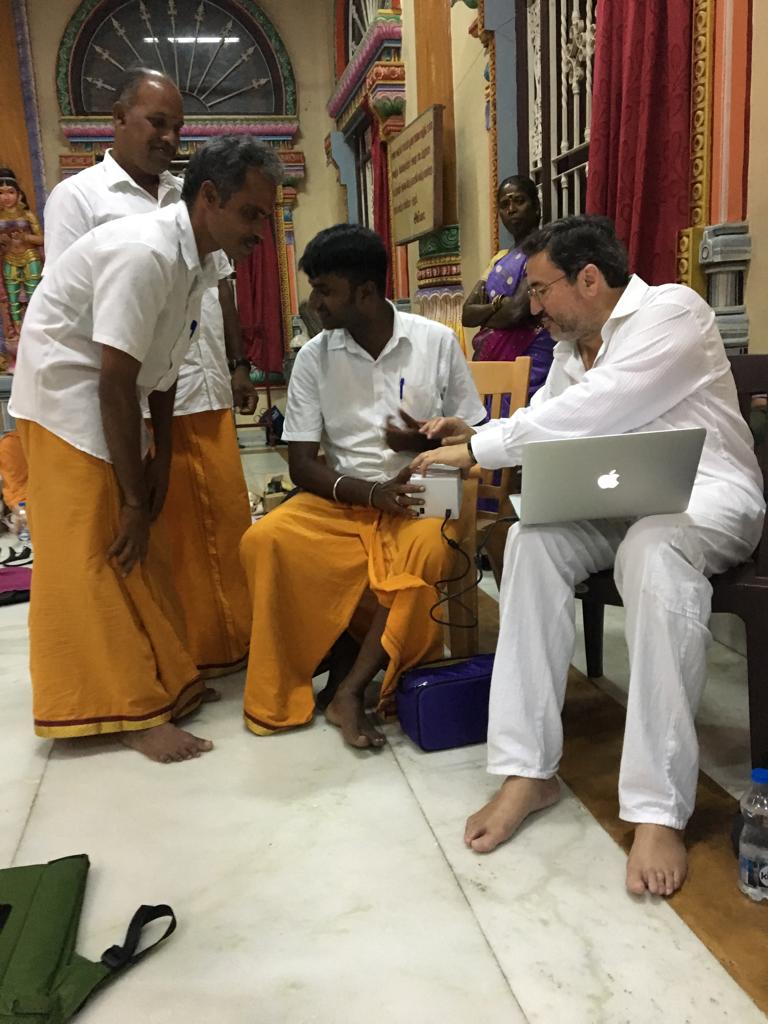
Current SDCRI’s collaborations include:
-U.C. San Diego Cancer Services Encinitas and Vista
-Consciousness and Healing Initiative (CHI): http://www.chi.is/
-Chopra Center and Chopra Foundation: https://www.choprafoundation.org/
-Guarneri Integrative Health: http://pacificpearllajolla.com/guarneri-integrative-health/
-Miraglo Foundation: http://www.miraglofoundation.org/
-UCSD Center for Integrative Medicine (CIM): http://cim.ucsd.edu/
-UCSD Center of Excellence for Research and Training in Integrative Health (CERTIH)
http://fmph.ucsd.edu/integrative-health/coe/index.html
-Scripps Center for Integrative Medicine
-University of California, Los Angeles (UCLA)
-University of California, San Francisco (UCSF)
-Institute Of Noetic Sciences (IONS): http://www.noetic.org/
-Resolution Care: Dr. Michael Fratkin and Team: http://www.resolutioncare.com
At a recent SDCRI board meeting, the following updates were discussed:
- The San Diego Cancer Research Institute, Dr. Dan Vicario and SDCRI’s Integrative Program have partnered with the “Consciousness and Healing Initiative (CHI)” to support its purpose, projects, research and service. CHI is an international collaborative accelerator of scientists, health practitioners, innovators, educators, researchers, professionals, artists, individuals and nonprofit institutions who share CHI’s vision. For details on the “Consciousness and Healing Initiative (CHI)” please go to this link: http://www.chi.is
SDCRI offered CHI administrative support and was its fiscal sponsor until CHI became its own separate nonprofit entity in August 2018. - SDCRI continues collaborating with UCSD Center of Excellence for Research and Training in Integrative Health (CERTIH) and Center for Integrative Medicine.
- Paul Brenner, M.D., Ph.D. continues with his educational videos and working on research in Epigenetics and his “Family Triangles” method.
- Mary Hollander R.N. continues with her outstanding online nutrition program: “Reality Based Nutrition”, filled with inspiration and wisdom.
- Alessandra Colfi, Ph.D., continues to expand the International Hope Made Visible™ (HMV) project: creating and sharing artful flags among cancer patients, survivors, families/friends, and caregivers. This project has created over 1,200 flags, from all over the USA, Canada, Colombia, Argentina, Guatemala, Ghana, France, Germany, The Netherlands, Italy, and Australia. These flags have been sent for exhibitions in Europe and throughout our communities for display in several venues. Hope Made Visible™ has also collaborated with Habitat for Humanity’s Veterans Program.
- The SDCRI Integrative team continue to meet at their annual “SDCRI Integrative Volunteer Appreciation Day”. They are thanked and reminded of how grateful SDCRI and the community are for their outstanding care and service. The volunteers continue to express their gratitude for the experience they had working with cancer patients over the last 20 years.
- SDCRI has organized collaborative meetings between Dani Grady, Dr. Ralph Greenspan, co-creator of the “Brain Initiative”, Dr. Paul Mills from UCSD CERTIH and Dr. Paul Brenner.
The Integrative program volunteers and the San Diego community continued to be an integral part of SDCRI’s growth in 2018. The SDCRI board remains deeply grateful for all this support and looks forward to its continued growth in 2019.
Daniel Vicario, M.D.
December 2018
Return to the main Featured Articles Page
Featured Articles Archive 2014-2016
Featured Articles Archive 2017-2018
